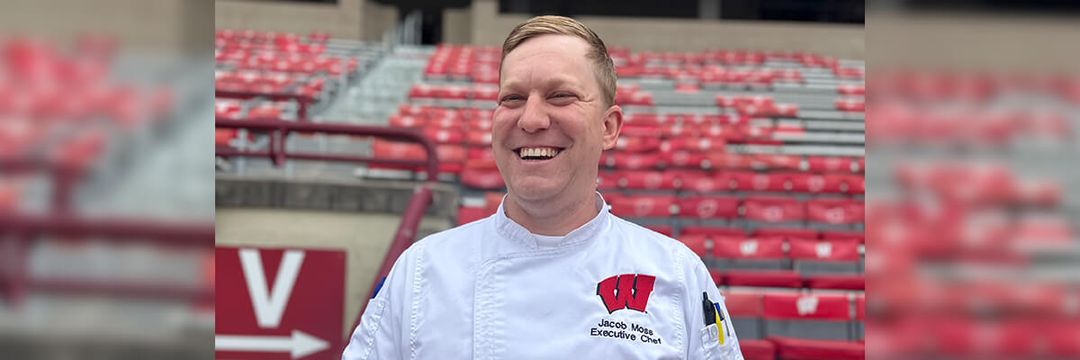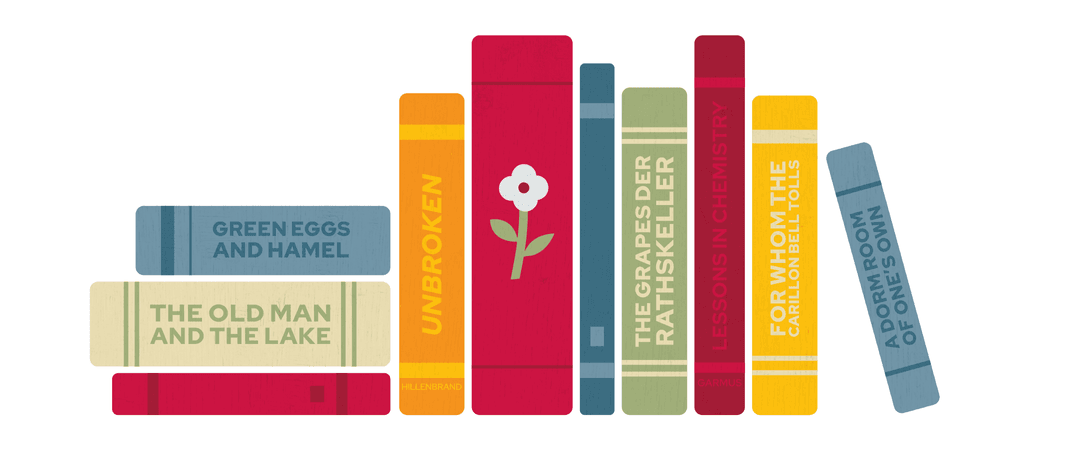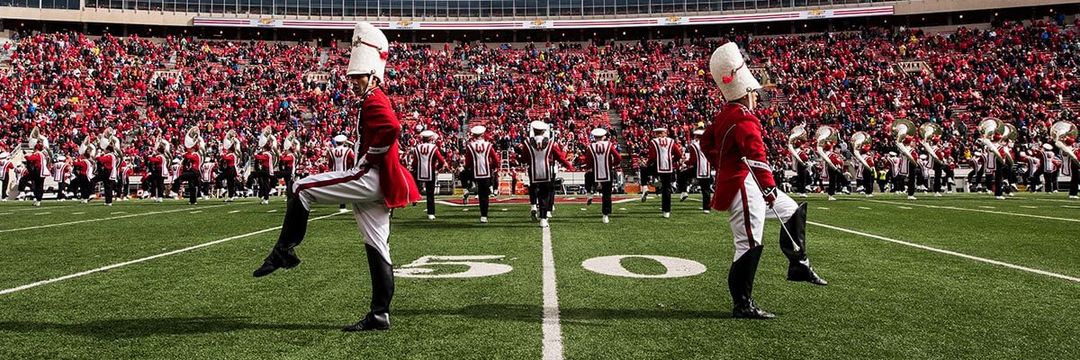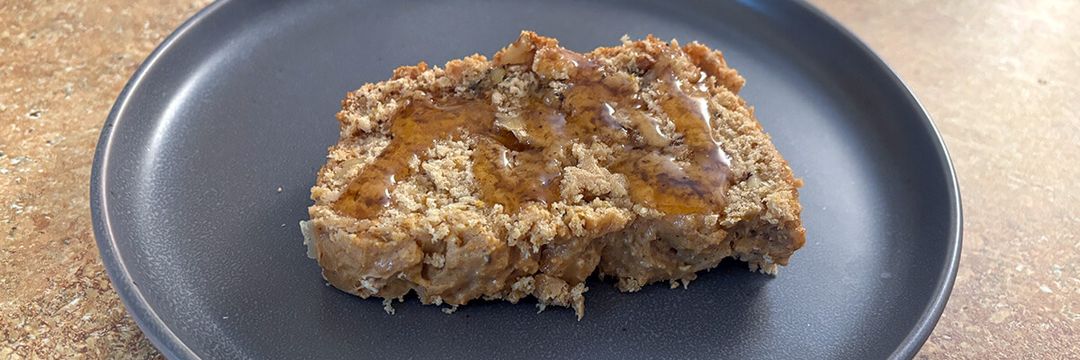UW–Madison’s Urban Canid Project follows the thoroughly modern foxes — and coyotes — that make campus their home.
It was the curious case of the fox that didn’t run in the night.
In the spring of 2016, David Drake and his graduate assistant, Marcus Mueller MS’17, had a wildlife camera stationed on the Lakeshore Path watching a den of red foxes: a fox, a vixen, and their litter of kits. The fox was an acquaintance of theirs, a research subject: the fourth fox they had tagged in their Urban Canid Project. They called him Red Fox 4.

Shortly after midnight, early on the morning of April 25, 2016, Drake and Mueller captured an odd image. A couple of coyotes — one of whom was also an acquaintance, an animal they knew as Coyote 7 — came by Red Fox 4’s home to do a little research of their own. Red Fox 4 stood outside the den and barked his displeasure, but the coyotes were unmoved. They peered into the den, wandered around the site, and then eventually moved on down the lakeshore. The coyotes foraged around the fox den for about an hour before wandering on. On other nights, the coyotes came back, again and again, at least once a week for more than a month.
But if Coyote 7 was emotionally unmoved, Red Fox 4 and his family were literally unmoved. And that was curious.
“What’s so interesting …” Drake says, and then pauses and drops a D-bomb. “Dad-gum, this isn’t typical. In rural areas, if you have coyotes, you won’t find red foxes. The coyotes will displace them — kill them or chase them out. But these coyotes showed no aggression. And these foxes didn’t leave. I wouldn’t say they were happy about coyotes being outside their den, but they didn’t leave.”
The anecdote was noteworthy enough to tell the world about. In January 2018, Mueller and Drake published “Coexistence of Coyotes (Canis latrans) and Red Foxes (Vulpes vulpes) in an Urban Landscape” in PLOS One, an online, open-source scientific journal. The news caused a minor stir on campus, but mainly because so few Badgers were aware that coyotes and foxes live so close to Bascom Hill. The deeper point, that fox and coyote behavior had changed, was lost on most people.
But Drake isn’t most people. He’s been studying predatory Madison for several years, and his work is creating one of the first major datasets on urban red foxes in North America.
Dog and Drake
A disclaimer: the Urban Canid Project does not, in fact, care about all urban canids. Canids are members of the dog family — coyotes, dingoes, dogs, foxes, jackals, and wolves. When Drake talks about urban canids, he doesn’t mean all urbs. He means only Madison. And he doesn’t mean the most common of urban canids, the dog, whether domestic or feral. Jackals and dingoes live in Africa and Australia, respectively, and they never cross Drake’s path. While Wisconsin’s wolves are increasing in number, they tend to stick to rural areas. They have not moved into cities, or at least not yet.
Coyotes and foxes are the Urban Canid Project’s chief interest, and they seem to be making a play to become the apex predators in various neighborhoods around Madison.
Urban coyotes have been a common sight for a while. Though the species was first documented in western North America, C. latrans’s population spread east as its predatory competitors (gray and red wolves) were killed off. Coyotes took the top spot in the food chain, and they moved from wild areas to rural spaces and eventually to towns. By the later 20th century, they were increasingly seen in American cities. By the early 21st century, they were documented in Chicago’s Loop and New York’s Central Park.

Red foxes, however, have been slower to adapt, at least in the United States. V. vulpes is one of the most widespread canid species, ubiquitous around the Northern Hemisphere. Since the early 20th century, Europeans have seen them slipping into cities — London is home to an estimated 10,000 foxes. But until recently, red foxes have been relative strangers in North America’s urban centers, and there has been little research on the animals’ behavior.
Drake hopes to change that. These 21st-century foxes are why he became interested in canids in the first place.
Earlier in his career, Drake’s interest was in birds. He wrote his master’s thesis on the greater prairie chicken and his doctoral dissertation on the lesser prairie chicken. Many of his early publications were about the interactions of birds and human structures: wind farms and airports. His office is still decorated with avian taxidermy: a greater prairie chicken, a hooded merganser, and a snowy owl, all taken from the wildlife-ecology collection that professor emeritus Scott Craven MS’76, PhD’78 used as a teaching tool before his retirement.
Drake was on the faculty at Rutgers, happily working his way toward tenure, when a position opened up at UW–Madison. “Wisconsin had the first wildlife-ecology program in the world,” he says. “It was where Aldo Leopold taught. I couldn’t pass this up.”
And once he’d arrived, he discovered other opportunities that he couldn’t pass up. One of those called at Drake’s office in January 2014, when staff from the Lakeshore Nature Preserve asked him to look into coyotes living on Picnic Point. Around the same time, Drake knew of a family of red foxes that had been seen burrowing under the School of Human Ecology building. He wasn’t sure what the animals had in common besides a taxonomic family, but he suspected there was something there worth studying. And so he began designing the Urban Canid Project. A year later, he recruited Mueller to join him.
Mueller Time
“I’ve always been interested in urban wildlife,” Mueller says. A Wisconsin native, he did his undergraduate work at UW–Stevens Point, where he studied wildlife ecology, but much of his focus had been on whitetail deer. Deer are important animals in a state where deer hunting is a billion-dollar industry. But whitetails have been heavily studied. Canids offered Mueller the opportunity for “a ton of growth.”
With the Urban Canid Project, Drake designed the program, and Mueller provided time — a lot of hours spent doing the project’s labor. The result has been one of Madison’s most intensive studies of local predators.
The two ecologists sketched out a core research area that extends from Lake Mendota in the north to the Arboretum in the south, from Madison’s Beltline Highway in the west to the isthmus in the east. “Of course,” says Drake, “the dad-gum animals go where they want. The boundaries were our research area, but we tried to follow them wherever they went.”
Snag and Tag

Winter is trapping season. From November through March, the Urban Canid Project watches for snowfall to find the nights when it might set its traps. Coyotes are nocturnal — they do their wandering at night. Foxes are crepuscular — they’re active in the twilight hours at dusk and dawn. Both are shy of humans, so the key is snow, which shows the animals’ tracks: coyotes and foxes tend to follow the same paths, so spotting their tracks in the snow shows the Urban Canid team where to set their traps.
The traps themselves are cable restraints, which are a bit like choke chains. According to Drake, the project has had more than 5,500 trap nights — the number of traps multiplied by the number of nights each trap is in the field. The goal has been to trap at least one coyote per active pack in Madison and one fox per family. This gives Drake and Mueller an idea of range, territory, and social structure.
Working with between 20 and 30 undergraduates and as many veterinary students as they can convince to volunteer their time, Drake and Mueller began to track, trap, and document the foxes and coyotes that live in their research zone. Each animal would get a quick medical exam — weight and vitals, blood sample, and a swab of the nose and rectum — and then receive colored ear tags and a radio collar so that Drake and Mueller could follow their wanderings.
Radio collars would not be Drake’s first choice. He’d prefer GPS trackers, which would enable him to follow each animal at any time of day or night, all from his laptop computer. But GPS is expensive. Each radio collar costs only $220. A GPS tracker would cost $1,500 to purchase and then $500 a year to operate. “That’s a lot of money,” Drake says.
So radio collars it was, and it was Mueller’s job was to use telemetry to track the collared animals. Working five-hour shifts, he’d drive around Madison, spending an hour or so in each area where he hoped to find a fox or coyote. Because he wasn’t able to track the animals around the clock, he rotated his shifts so that he would, over time, cover all hours of the day and night to see where the animals went and when they were on the move.
To help cover the rest of the time, Drake and Mueller leveraged the animals’ ear tags, which help to expand the Urban Canid tracking team. Each animal’s tags are a unique color combination, and Drake uses social media and a citizen-science reporting portal called iNaturalist.org to encourage Madisonians to report fox and coyote sightings, and when applicable, ear-tag color. Thus, about 800 people around the city have made about 1,200 reports, helping to expand the dataset on the animals’ travels.
“We’ll publish a paper overlapping the radio-location data with iNaturalist data,” Drake says. “We’ll show that fox and coyote share the same territory about 65 percent of the time.”
Shared Space
Mueller says he enjoyed following both fox and coyote, as “both are unique.” But his interest tended to follow the coyotes. Their wanderings were wider, their adventures more complicated. While each trapped and tagged animal received an ID number for the research project, Mueller gave only one a name, and that one was a coyote.
“It was the 12th one we caught,” he says. “And we trapped it on Aaron Rodgers’s birthday. So we gave it green and gold ear tags and named it Aaron Rodgers.”
But Drake is less impressed by the wide-ranging coyote, and his interest focuses most intensely on the red fox.
“People have been studying coyotes for years,” he says. “There’s not a whole lot more that urban coyotes can teach us. But foxes — there have been studies in Europe, but almost nothing about urban foxes in North America.”
Over a two-year period, Drake and Mueller trapped 11 coyotes and 12 foxes. They’ve found that there are three coyote packs in the study’s region, all of which are essentially permanent. There are typically about four fox families in the campus area, but fox families seem to come and go.
“Maybe they’re less well established,” Drake says. “Maybe this is part of their being new to an urban setting.”

The coyotes make their base in Madison’s green spaces — the Arboretum, Picnic Point, and Elver Park on the far west side. There, they hunt at night and prey on moderate-sized animals such as rabbits and even deer. Foxes like to live in more built-up areas, keeping closer to their dens and hunting smaller animals: moles, voles, mice, and squirrels, as well as stealing pet food that owners leave for their outdoor animals.
But the surprise is how much the animals’ territories overlap. Wide-ranging coyotes often cross over fox country without disturbing the foxes. They don’t fight for homes or for resources. They let each other be.
“It seems that there’s just a lot of food around town,” Drake says. “There’s no need for foxes and coyotes to compete with each other. They can occupy the same landscape.”
After Life
When Drake collars a fox or coyote, the animal is collared for life. The devices are designed to never be removed. Typically, he can track a radio-collared animal for two to three years until, eventually, the radio’s batteries die. Or the animal does. But Drake and Mueller have found that Madison’s urban canids tend to live longer than their rural cousins.
“Generally,” he says, “Madison’s fox and coyote are pretty dad-gum healthy.”
They live longer but not forever. Foxes and coyotes are hit by cars, and they suffer from disease. Further, almost all of the coyotes and foxes they found are infected with heartworm, a parasitic infection that was once confined to the southeastern U.S. but has been spreading northward in recent decades.
What Madison’s canids don’t die of, however, is conflict with each other. Madison’s urban foxes raise their kits without threat from their chief natural competitor, and so they manage to maintain and even, perhaps, grow their population in the range around campus.
The study that Drake and Mueller published in PLOS One marked the end of Mueller’s graduate career. It was an outgrowth of his thesis, and after he earned his master’s, he left the UW and launched a business drawing in part on the skills he’d learned working with Drake. He moved to Milwaukee and opened a franchise for Skedaddle Humane Wildlife Control, through which he captures and relocates animals in urban and suburban areas.
So far, he hasn’t had to deal with coyotes or foxes in his professional life. “Mostly it’s raccoons,” he says. But he’s happy to use his experience to assist actual people. “I didn’t want to just do research. I wanted to stay in the field. And how cool is it that I get to do this for people?”
Drake is keeping the Urban Canid Project going, and he’s looking for a new graduate student — and for more funding so that he can increase the amount of data he collects. Eventually, however, he expects he’ll stop trapping coyotes and focus entirely on red foxes because “there’s a ton to learn about them,” he says. And if he sets aside coyotes, he might find time to devote to other predators that he believes will soon make homes in urban Wisconsin: gray foxes, for instance. And bobcats.
“I’m waiting for the bobcat to show up in Madison,” Drake says. “Out west, people have found bobcats in cities, and they’re showing up in rural, western Dane County. There’s no reason why they can’t be here in town.”
Even if the Urban Canid Project sheds canid from its name, and Drake starts tracking felids, too, he believes that the project itself will keep going and that there will be more curious cases to research.
“I’m only 52,” Drake says. “I expect to be doing this project for the rest of my career.”
For more information on the Urban Canid Project, including how to get involved, visit uwurbancanidproject.weebly.com. To donate, see supportuw.org.









